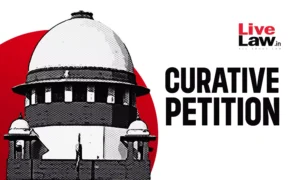
Why in news?
- In a landmark judgment passed in April 2024, the Supreme Court of India showcased its commitment to rectifying grave miscarriages of justice through curative petitions.
- The case in question, Delhi Metro Rail Corporation Ltd. (DMRC) vs Delhi Airport Metro Express Pvt. Ltd. (DAMEPL), involved a multi-crore arbitration award and underscores the significance of this extraordinary legal avenue.
Background: A Public-Private Partnership Gone Wrong
- This case stemmed from a 2008 agreement between DMRC, a state-owned entity, and DAMEPL, a private consortium led by Reliance Infrastructure, for constructing and managing the Delhi Airport Metro Express.
- Disputes arose, leading DAMEPL to terminate the agreement in 2013, citing safety concerns and operational issues.
Legal Labyrinth: Arbitration, High Court Battles, and Supreme Court Intervention
- The ensuing legal battle saw an arbitration panel ruling in favor of DAMEPL, directing DMRC to pay nearly Rs 8,000 crore.
- The Delhi High Court initially sided with DMRC, but the Supreme Court, in a 2021 verdict, upheld the arbitral award.
A Shift in Course: DMRC Files Curative Petition
- DMRC, however, believed the 2021 judgement contained a “fundamental error.”
- They exercised their rare right to file a curative petition, seeking to overturn the Supreme Court’s own decision.
What is a Curative Petition?
- A curative petition is an exceptional legal recourse available after all other avenues of appeal have been exhausted.
- It serves as a safety valve to prevent miscarriage of justice and deter abuse of the legal process. These petitions are typically considered a last resort, and the Supreme Court emphasizes their limited use to preserve the sanctity of the judicial system.
Criteria for Entertaining a Curative Petition
- The Supreme Court considers curative petitions only under specific circumstances. These include:
- Violation of Natural Justice:
- If the petitioner was not given a fair hearing or there was a breach of the principles of natural justice, such as the petitioner not being heard before the court passed an order.
- Apprehension of Bias:
- If there are reasonable grounds to suspect bias on the part of the judge who passed the original judgement, such as failure to disclose relevant facts.
- Violation of Natural Justice:
Strict Scrutiny and Limited Scope
- Curative petitions are not a gateway to relitigate cases. The Supreme Court emphasizes they should be “rare and reviewed with caution.”
- Stringent procedures govern them, including certification by a senior advocate and initial review by a high-level bench.
Landmark Judgement: Supreme Court Recognizes Error
- In a significant turn of events, the Supreme Court, in its 2024 judgement, allowed DMRC’s curative petition. The Court acknowledged a “fundamental error” in its previous verdict and ruled in favor of DMRC.
- Implications and Significance
- This case holds immense importance for several reasons:
- Upholding Judicial Accountability:
- It underscores the Supreme Court’s willingness to rectify its own errors, ensuring justice prevails even after final verdicts.
- Clarity for Public-Private Partnerships:
- The judgement provides much-needed clarity on legal frameworks governing public-private partnerships in infrastructure projects.
- Importance of Curative Petitions:
- It highlights the crucial role of curative petitions in safeguarding against grave miscarriages of justice.
Conclusion
- The DMRC vs DAMEPL case serves as a powerful testament to the Supreme Court’s commitment to justice.
- It showcases the significance of curative petitions as a vital tool to ensure the legal system functions with fairness and rectitude.
- While these petitions are extraordinary measures, their judicious use upholds the highest ideals of the Indian judiciary.
People also ask
Q1: What is a curative petition?
Ans: A curative petition is an exceptional legal recourse available in India after all other avenues of appeal have been exhausted. It’s a final attempt to overturn a Supreme Court judgement in cases of grave miscarriage of justice.
Q2: What are the chances of a curative petition being successful?
Ans: Curative petitions are rarely successful due to their strict criteria and the Supreme Court’s emphasis on preserving judicial finality. However, the DMRC vs DAMEPL case in 2024 demonstrates that the court is willing to use this power to rectify errors.
Q3: Are there any costs associated with filing a curative petition?
Ans: The Supreme Court may impose exemplary costs on the petitioner if the bench determines the petition lacks merit and is frivolous.
Your article helped me a lot, is there any more related content? Thanks!
Thanks for sharing. I read many of your blog posts, cool, your blog is very good.
Thank you for your sharing. I am worried that I lack creative ideas. It is your article that makes me full of hope. Thank you. But, I have a question, can you help me?
Thank you for your sharing. I am worried that I lack creative ideas. It is your article that makes me full of hope. Thank you. But, I have a question, can you help me?
Thank you for your sharing. I am worried that I lack creative ideas. It is your article that makes me full of hope. Thank you. But, I have a question, can you help me?